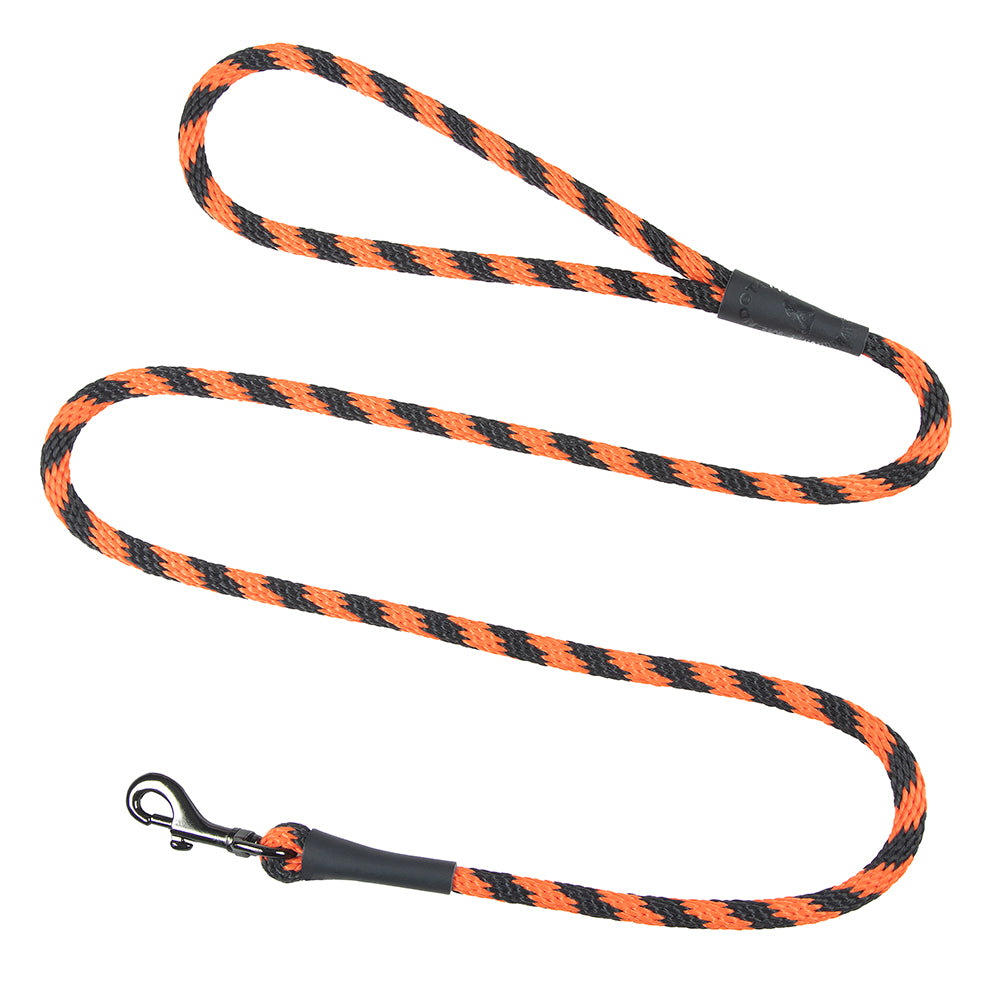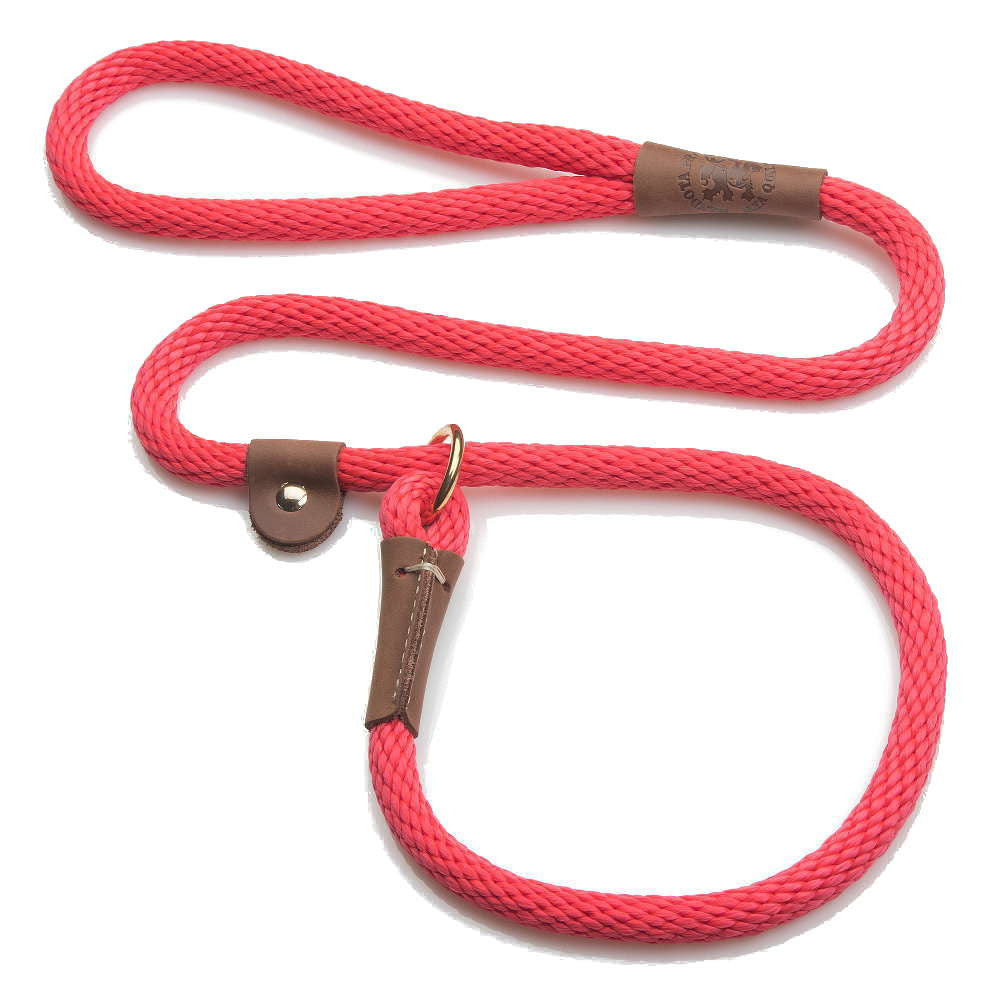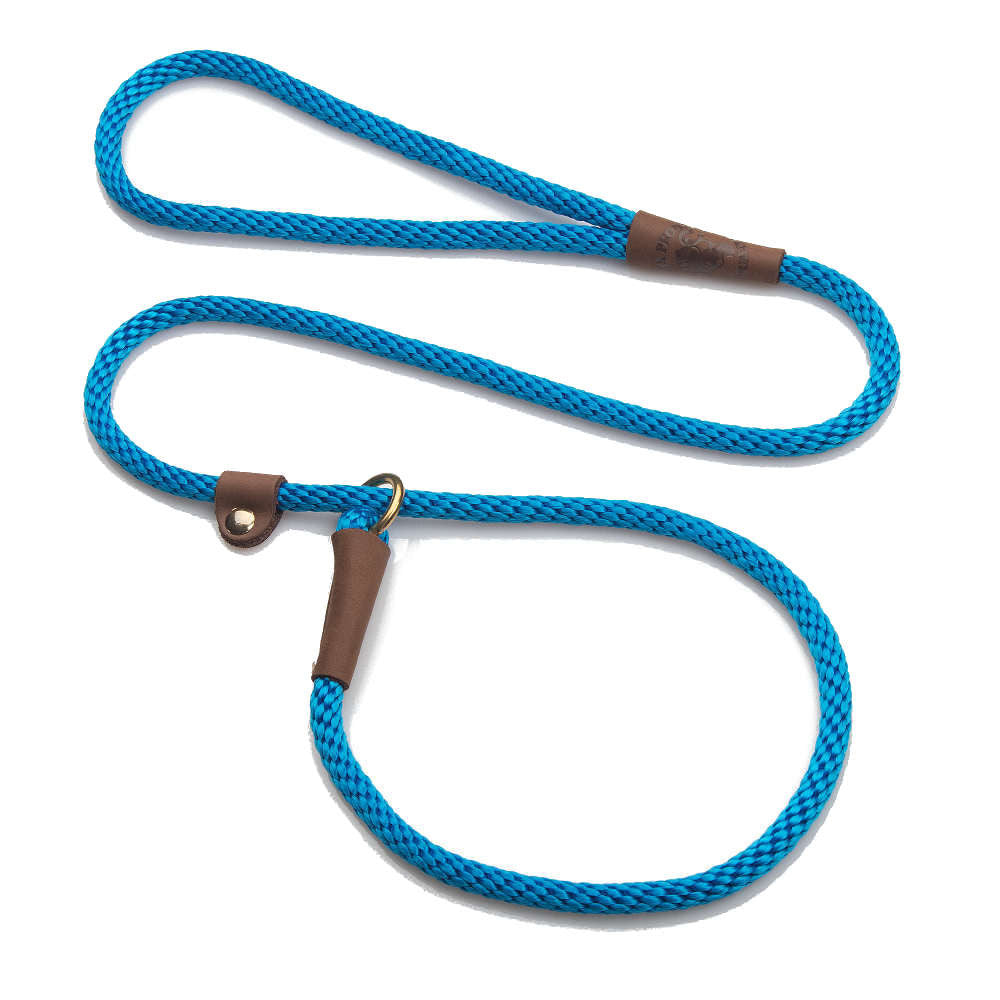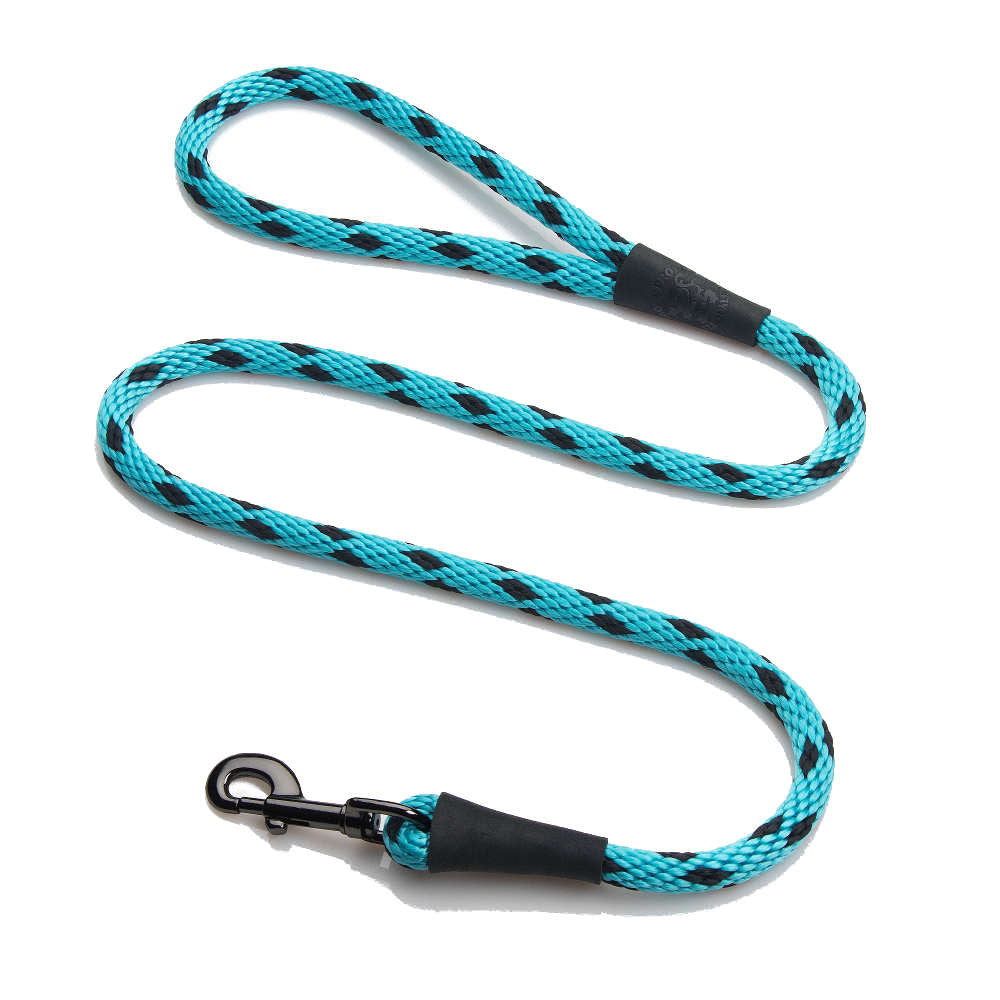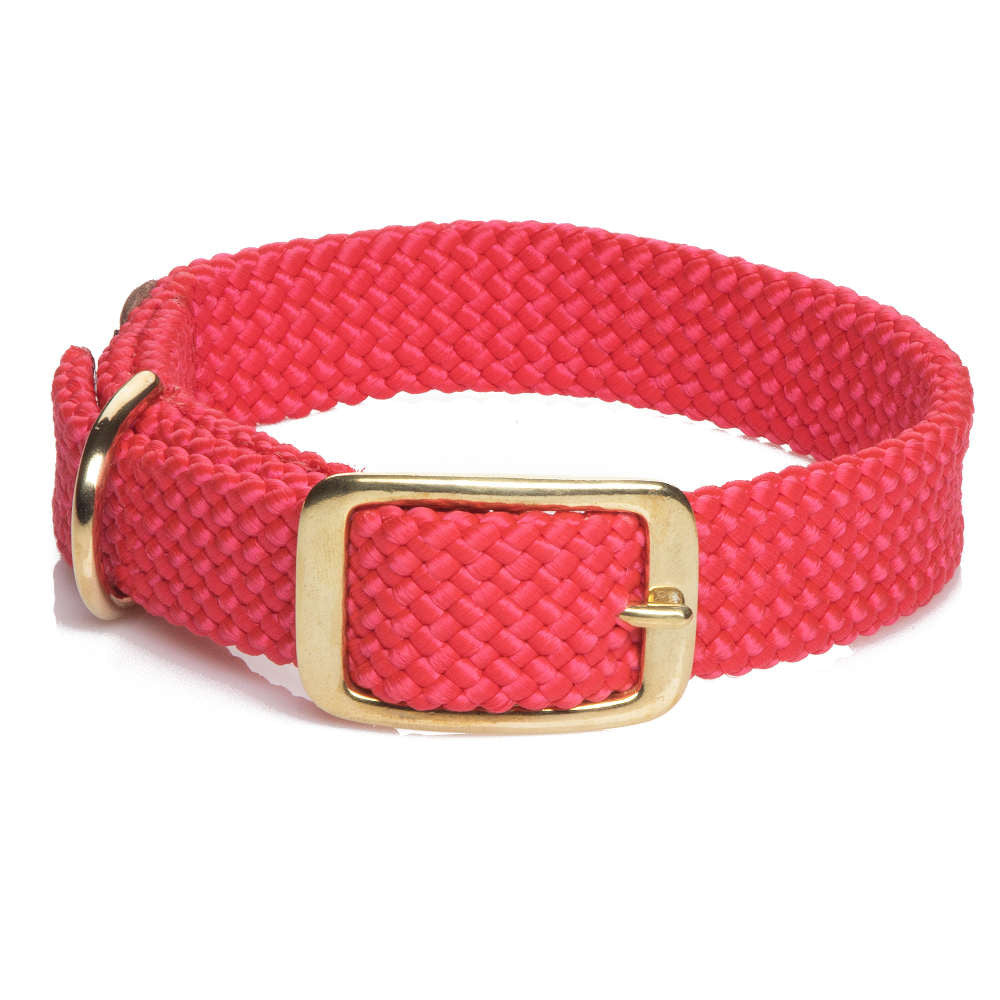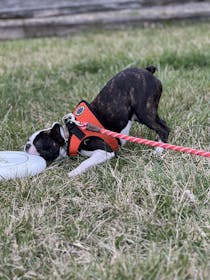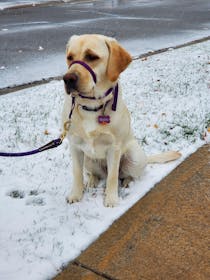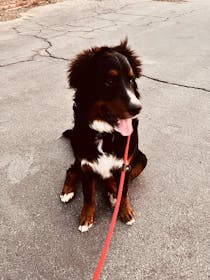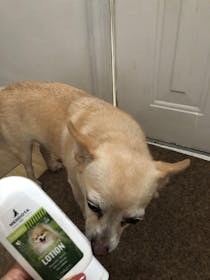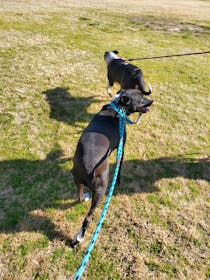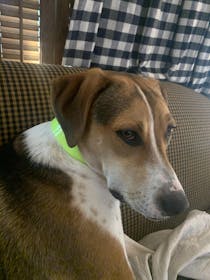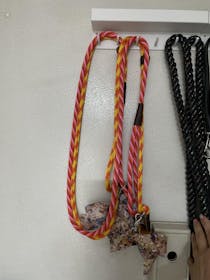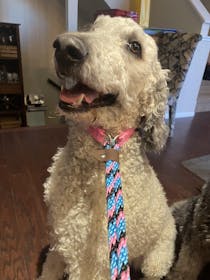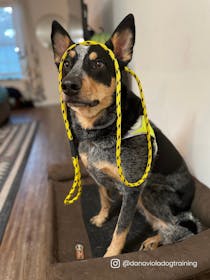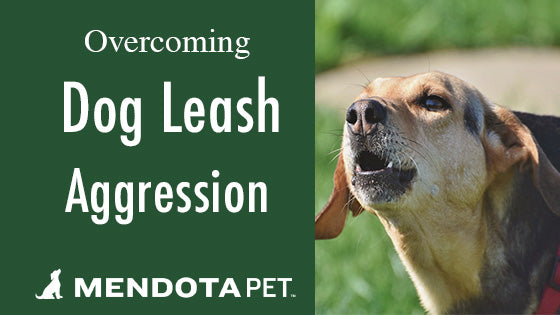How to Use a Slip Leash Correctly

Slip leads are a combination of a leash and a collar in one easy-to-use design, making it the most versatile of all leads. They can also be easily turned into a head harness or a body harness with just a few small adjustments.
Slip leads are unique in that they are designed to tighten under tension and release as soon as the tension is gone. Not only are they practical and simple to use, they are also one of the most important tools in a trainer’s arsenal.
But if you haven’t learned to use a slip lead properly, it can be dangerous for you and your dog. Here is how to use a slip lead in three easy steps.
- Prepare the slip lead by creating a loop large enough to pass easily over your dog’s head. Make sure the dog knows you are attempting to place a slip lead over him. Otherwise, they may be startled and begin to pull away.
- If you’re right handed, form the letter "P" with the leash. The dog should be standing on your left side, and that will help you form the perfect loop. Place your right hand above the leather stop and use your left hand to slip the lead over your dog’s head.
- If you’re left handed, form the number "6" with the leash. The dog should be standing on your right side. Hold the loop that will be passed over your dog’s head with your dominant hand. Hold the end of the lead with your non-dominant hand. Place your left hand above the leather stop and use your right hand to slip the lead over your dog’s head.
- Quickly pass the lead over the dog’s head and use your dominant hand holding the leather slide. Slide the leather stop down until the leather stop is still loose, but still tight enough to not allow your dog to slip his head through.
- Adjust the loop size by sliding the leather slide down the rope.
How to Adjust a Slip Lead
A slip lead, when properly fitted, should rest behind the jaw at the very top of the neck (right behind the ears).
When using a slip lead, you will want the leather slide to touch the dog’s neck so he can’t slip out, but is still loose enough to slide two fingers between the slip lead and your dog’s neck. The goal is to make it tight enough that your dog doesn’t slip through, but loose enough so your dog is not uncomfortable or choking.
The slip lead should fit around the back or base of the ears and the area under the jaw.
Never attach a slip lead to the middle of the throat area or neck area. This can cause damage to your dog should they suddenly pull away or pull while on walks.
Think about smoothness of action when you’re walking your dog. Ideally, you want your dog to heal nicely before putting them on a slip lead. But, that’s not always possible - particularly in rescue scenarios.
Releasing A Slip Lead
To release the slip lead, simply loosen the leather slide by moving it towards the handle on the leash.
Always let your dog know what your intentions are before you remove the lead. This helps build trust between the handler and dog.
The more you use the slip lead, the easier it will be to move the slide.
The slip lead is perfect for getting a dog into a ring, loading into or out of cars, moving a dog quickly from one place to another, and offers a multitude of training benefits.
Tips for Using a Slip Lead:
- Make sure your dog knows how to walk on a leash before attempting to use a slip lead.
- Always verify the slide is locked before moving with your dog.
- Use a practice stuffed animal to create your own routine before trying it on your dog.
- When working with dogs, always make sure you’re standing or squatting. This enables you to move out of the way quickly if required.
- When using a slip lead in addition to a collar, ensure the collar is out of the way and that it won’t impact the effectiveness of the slip lead.
- If your dog starts pulling against the lead with it on its throat, make sure you stop and adjust the lead.
When you SHOULD use a slip lead:
- After your dog has been trained to walk on a leash and you're teaching your dog to walk well.
- When alerting the dog that training is starting.
- Transporting to or from places.
- Loading and unloading dogs from car or transport.
When you SHOULD NOT use a slip lead:
- When tying your dogs to an object or during unsupervised time.
- When training your dog to walk on a leash. Dogs should already know basic walking and healing commands.
- On dogs who persistently pull (check out our other leads)
- Puppies, cats or kittens, or small breeds.
Choosing a Slip Lead
Mendota Pet offers an extensive collection of slip leads in a vast array of colors, sizes, materials and designs.
- Material: Braided polypropylene rope or leather
- Design:
- Basic Slip Lead: This classic style is available in ⅜” or ½” diameter rope and 4-foot or 6-foot lengths and 38 colors.
- Dog Walker: This martingale style lead easily slips around the neck, securing your dog without it applying too much pressure to your dog’s neck. Great alternative to the Slip Lead!
- Leather Handler Slip Lead: Fully stitched rolled leather with a slip ring and stop tab for correct collar sizing.
- Swivel Slip: Perfect for dogs who have a problem staying on course. This lead features am added swivel that acts as an anti-coiling tool, allowing you to easily hold handle without having to make hand adjustments.
- Show Loop Leash: Ideal for the show ring with quick release and easy capture. The lead is 4' (1.22 m) long with a diameter of 1/8" (3.18 mm).
- Classic Leather Slip Leash: Fully stitched design with a slip ring and stop tab for correct collar sizing.
- Petite Slide Lead: This nylon lead is idea for small dogs, featuring a smaller diameter, 1/8" or 1/4" diameter, and is gentle, but secure.
- Diameter: ⅜” or ½” available
- Length: 4-foot, 6-foot,
- Purpose: Show, Rescue, Transport, Daycare, Daily
Mendota Pet slip leads are made in the USA from braided polypropylene rope. They are available in two widths (⅜” and ½”) and are available in 4-foot and 6-foot lengths. The leashes are accented with oiled leather, and have a leather slide to prevent the ring from sliding too far toward the handle. This allows the slip lead to tighten up as much as necessary, but limits how big it can get so it doesn't slip off.
Feel like you need a slip lead but are working with a dog that doesn’t handle slip leads well? Consider our Martingale-style Dog Walker.
Discover the timeless design and lasting quality of the Mendota Pet Products. Handcrafted in the USA, our British-style lead is a leash and collar in one convenient design, making it ideal for the casual dog walker or professional trainer.
Our durable, multifilament braided rope features a “broken in” feel that is soft on your hands and pliable enough to roll up and put in your pocket. The oil-tanned leather splices and innovative hardware give these leads a beautiful finishing touch, proving that the best design is found in the simple details.


